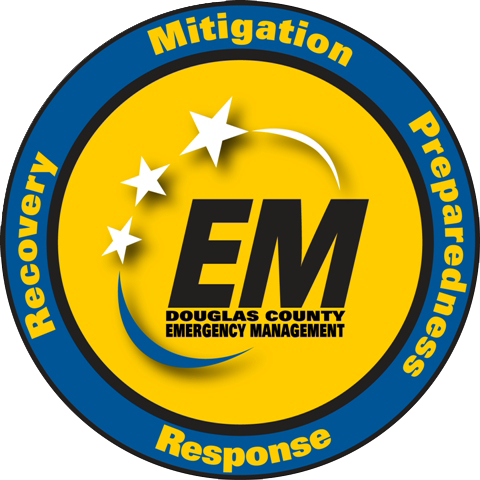Emergency Management
Tornado Safety and Awareness
Understanding how to receive severe weather alerts and the appropriate steps to take when those alerts are received is an important part of being prepared. Emergency Management recommends using more than one method to receive severe weather alerts. Below are several ways to receive weather alerts.
Northeast KS Notification System
Douglas County offers a free call notification system in which you can get weather alerts on your phone via voice, text, and e-mail. Sign up today.
Weather Radios
NOAA Weather radios are a cost effective and reliable method to receive warning of impending weather. These can be combined with monitoring of local radio and TV outlets to keep you informed of changing weather conditions.
Weather Radio Facts and Features:
- All Hazard Radios have battery back-up.
- Equipped with a special alarm tone that will sound an alert and give immediate information about a weather, natural or man-made emergency, or a life– threatening (or community–specific AMBER alert) situation.
- SAME (Specific Area Message Encoder) pinpoints alerts for your area, reducing false alarms.
- The hearing and visually impaired also can get these warnings by connecting weather radios with alarm tones, strobe lights, pagers, bed-shakers, etc.
Local Media Outlets
Our office recommends identifying local media outlets (radio stations and TV) to which you can turn during severe weather events. Local media provides the latest information on what the storms are producing and where the threat is. They also give the "all clear" when storms have moved out of the area.
Wireless Emergency Alerts (WEA)
Wireless Emergency Alerts are free alerts sent directly to your cell phone. The most common weather alerts you'll receive for this area are Tornado Warnings and Flash Flood Warnings. Alerts are received when the cell phone tower your cell phone is connected to is included in the warning polygon. You may also receive Presidential Alerts and Amber Alerts. For more information, visit http://bit.ly/WEA_Alerts.
Social Media and Cell Phone Applications
There are a number of ways you can use social media and cell phone applications to receive severe weather alerts. Just make sure these include an audible alert which activates even if you are not looking at your phone. These sources can also provide additional information about the storms. When using social media to get severe weather information, go to trusted sources (emergency management, NWS, local media, etc.).
Where to Go When a Warning is Issued
When the outdoor warning sirens sound or when you receive a Warning, take the following safety precautions:
- In a home or building:
- Move to a designated shelter (as determined by the facility or installed in your home), such as a basement or installed saferoom.
- If a basement is not available, move to an interior room or hallway on the lowest floor and get under a sturdy piece of furniture.
- Use your arms or a helmet to cover your head and neck to protect against flying debris.
- Stay away from windows.
- In a vehicle
- Do not try to outrun a tornado. Abandon the vehicle, and take cover in a nearby structure or building following the guidelines above.
- If a suitable structure is not available, either get down in your car and cover your head, or abandon your car and seek shelter in a low lying area such as a ditch or ravine.
- Mobile homes
- Even if tied down, offer little protection from tornadoes and should be abandoned.
- If severe weather is possible, see about staying with a friend or if your park has a shelter available.
- Apartments:
- If on an upper floor, see if a neighbor below is available to assist you or if the complex has a ground level or basement facility available.
- Otherwise, go to and interior room on the lowest level possible.
- Use your arms or a helmet to cover your head and neck to protect against flying debris.
You may not always be in a familiar place when severe weather strikes. Any time severe weather is possible, use the information above to identify or ask the building manager where to find the best shelter in your location.
Douglas County does not have ;community tornado shelters. Some community members use open public buildings as their shelter. Call ahead before the severe weather event to determine the hours of operation for any location you plan to use. Do not assume that location will be open. This could be very dangerous. If you plan to leave your home, give yourself plenty of time to get to your shelter location.
